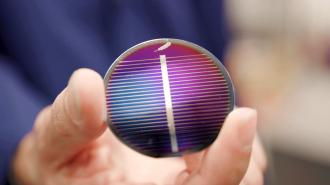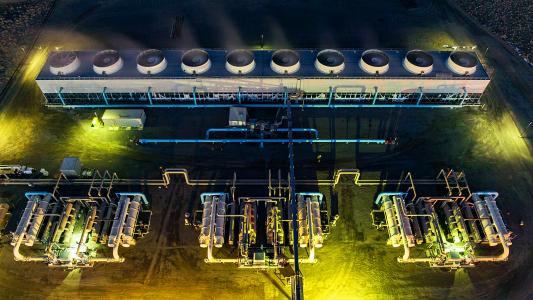NASA has awarded Blue Origin a $35 million contract to further develop a technology that creates solar cells out of lunar regolith — the dust and crushed rock blanketing the moon’s surface.
“[W]e’re inspired and humbled to receive this investment from NASA to advance our innovation,” said Pat Remias, VP of Blue Origin’s Capabilities Directorate. “First we return humans to the moon, then we start to ‘live off the land.'”
Moon or bust: NASA plans to send astronauts to the moon again as soon as 2025, with the goal of establishing a long-term presence on the lunar surface soon after. For that to work, it’s going to need a way to provide astronauts with a steady supply of everything they need to survive and thrive, from food and water to oxygen and electricity.
Every extra ounce of payload NASA launches from Earth increases the cost of the mission, though, so it plans to use resources already on the moon — an approach known as “in-situ resource utilization” — as much as possible.
“Our novel process fabricates solar cells, including cover glass, using only products from our reactor.”
Blue Origin
What’s new? On July 24, NASA announced that it was awarding 11 companies a total of $150 million in contracts to develop technologies designed to support the long-term exploration of the moon.
Blue Origin got the biggest contract of the bunch, with $34.7 million to work on its solar cell-producing technology, Blue Alchemist.
How it works: Blue Alchemist starts by melting lunar regolith in a reactor. It then uses an electric current to separate the iron, silicon, and aluminum in the regolith from the oxygen. The oxygen is captured for other uses, while solar cells are fabricated from the remaining elements.
“Our novel process fabricates solar cells, including cover glass, using only products from our reactor,” according to Blue Origin. “These long-lived cells resist degradation caused by radiation on the moon.”
Blue Origin’s goal is to make solar cells in a simulated lunar environment, totally autonomously, by 2026.
Looking ahead: Blue Origin has been developing Blue Alchemist since 2021, and in February 2023, it announced that it had used the system and simulated lunar regolith to make working solar cell prototypes.
Blue Origin will now use the NASA contract to continue developing Blue Alchemist with the goal of demonstrating its ability to make solar cells in a simulated lunar environment, totally autonomously, by 2026.
The big picture: While Blue Alchemist is being developed to help astronauts generate electricity on the moon, the technology could have an impact here on Earth, too.
Silicon must be extremely pure for use in solar cells, and typical processing techniques involve toxic chemicals and carbon emissions. Blue Origin says the silicon in its solar cells is 99.999% pure, and the manufacturing process is emissions- and chemical-free.
Whether Blue Alchemist could ever replace our traditional methods for purifying silicon and making solar cells depends on whether it’s cost competitive, but for now, it looks like a promising solution to the problem of keeping the lights on, off-world.
We’d love to hear from you! If you have a comment about this article or if you have a tip for a future Freethink story, please email us at [email protected].






